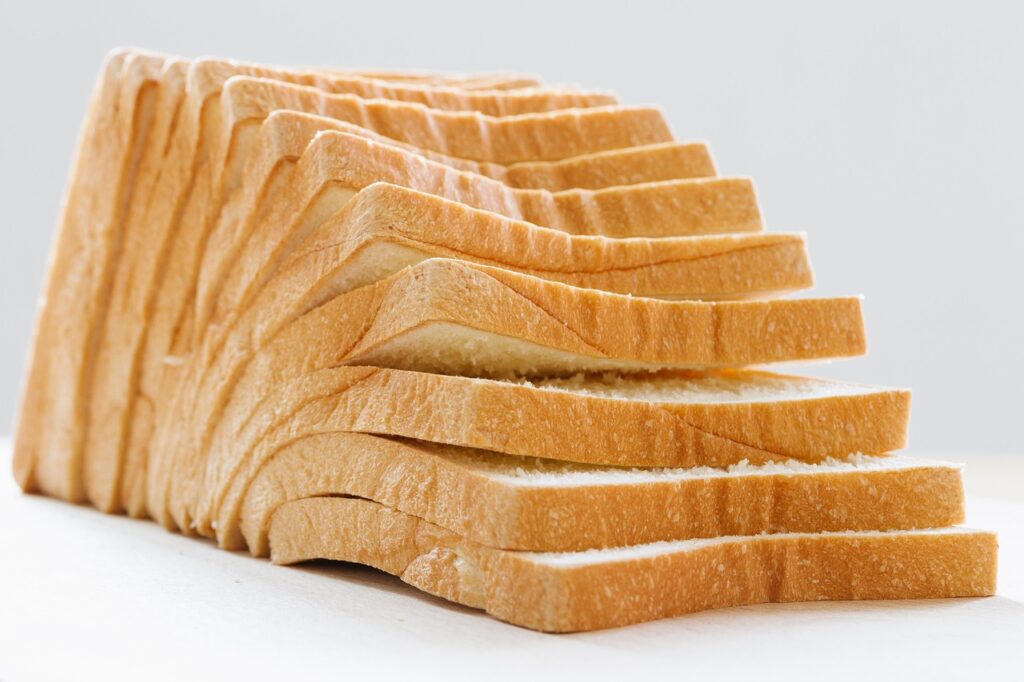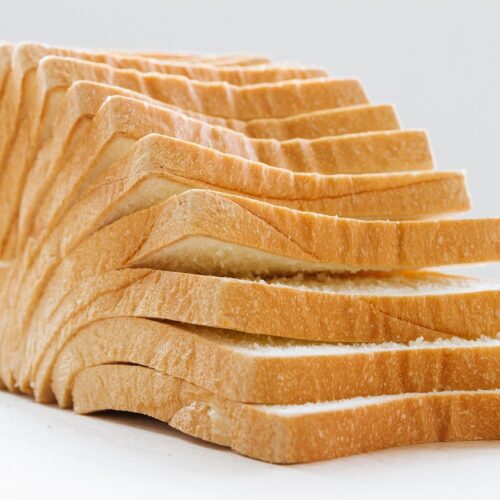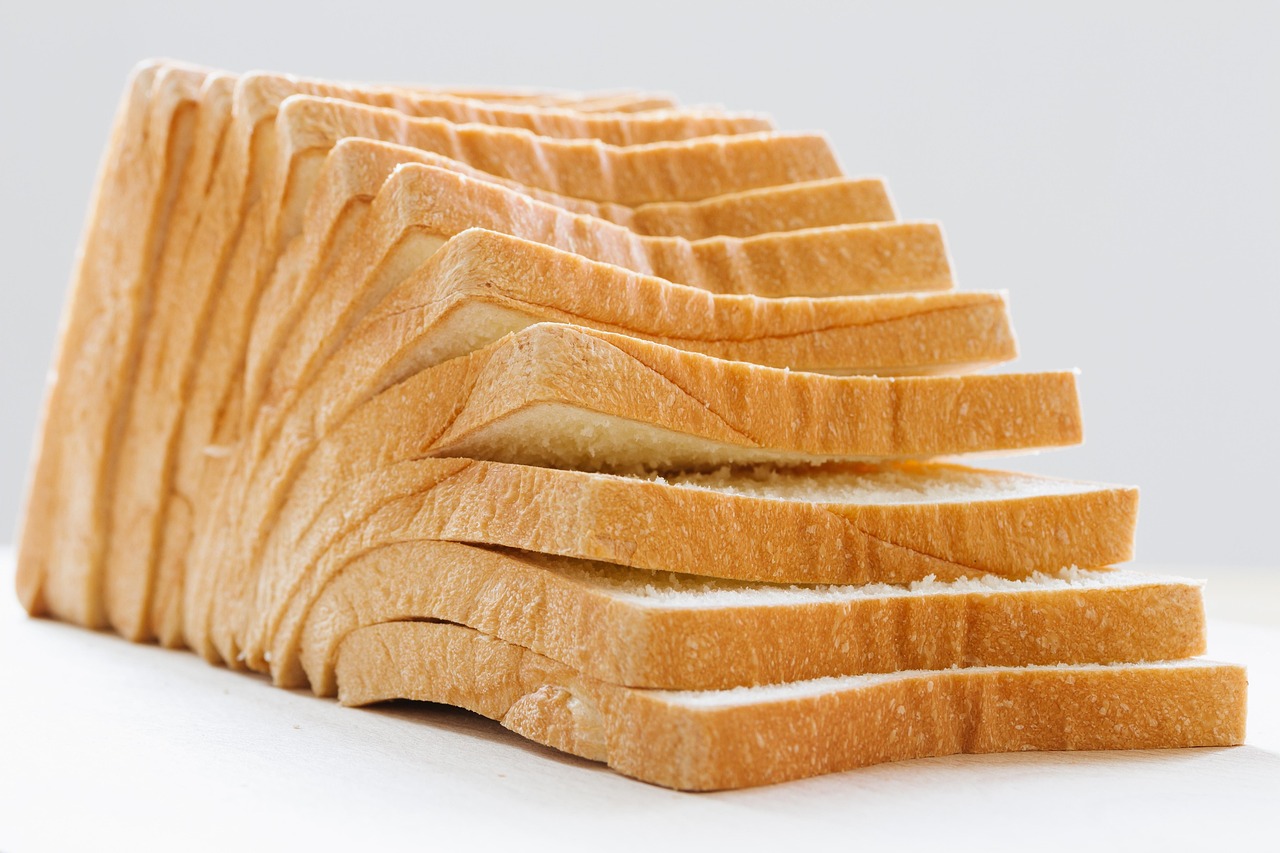Easy gluten-free white bread recipe made with simple ingredients. Soft, moist, and wheat-free — ideal for celiac, gluten intolerance, or healthy baking!

Ratings 05

What Is White Bread Without Gluten?
As of gluten, the protein that gives regular bread its chewy texture, is missing from gluten-free white bread, it is a soft, light, and fluffy bread made without wheat, barley, or rye. Somewhat more, it resembles the structure and elasticity of normal bread by incorporating gluten-free flours (like rice flour, tapioca starch, or potato starch) with binding agents like xanthan gum or psyllium husk.
Those that have celiac disease, gluten intolerance, and are on a gluten-free diet will love this bread. It’s indeed mild, slightly sweet, and perfect for toast, sandwiches, or breakfast, much the same as usual white sandwich bread.
To put it succinctly, gluten-free white bread provides the reassuring acquaintance of normal bread, but with safe and digestible ingredients for folks who are really allergic to wheat.
Health Benefits Of Gluten-Free White Bread
Gluten-free white bread is more than just a wheat-free alternative — it has several health benefits, especially for those who need or choose to avoid gluten:
01. Supports Digestive Health For Sensitive Individuals
For people with celiac disease or gluten intolerance, gluten-free bread prevents digestive discomfort, bloating, and inflammation caused by gluten.
02. Simpler To Assimilate
Some people seem to find this bread easier to digest, even though gluten-free flours like rice, potato, or tapioca are generally gentler to the digestive system.
03. Good Option For Wheat Allergies
Individuals allergic to wheat can enjoy bread without risking allergic reactions.
04. Personalized Nutrient Profile
Nut flours, seeds, or fiber can be added to many gluten-free breads to boost protein, vitamins, and minerals.
05. Lower Inflammation Potential
Avoiding gluten may reduce inflammation for people with autoimmune or inflammatory conditions.
Note:
Compared to whole-grain or multigrain breads, frequent gluten-free white bread generally has much less protein and fiber. Boosting its nutritional value can be accomplished by combining components like chia seeds, flaxseed, or psyllium husk.
Tips For Making Perfect Gluten-Free White Bread
Baking gluten-free bread can be tricky, but these tips will help you achieve a soft, fluffy, and tasty loaf:
01. Use A Good Gluten-Free Flour Blend
- Look for blends that contain rice flour, tapioca starch, potato starch, and xanthan gum.
- Psyllium husk or xanthan gum is important to give it elasticity and structure.
02. Accurately Measure The Ingredients.
- Compared to standard baking, gluten-free baking is less forgiving. Once you have taken exact measurements, use a digital scale.
03. Mix Batter Well
- Gluten-free dough is more like thick batter than traditional dough.To use a hand or stand mixer, beat extensively to incorporate air, which improves texture and rise.
04. Warm Water To Activate Yeast
- Use warm water or milk (about 40°C/105°F) to assist in a full stimulation of yeast. Yeast can be killed by high temperatures.
05. Give Yourself Enough Time To Rise.
- Especially in comparison to wheat bread, gluten-free bread rises extra gradually, 45 to 60 minutes for the first rise.
- Before baking, let the second rise in the pan for 20 to 30 minutes.
06. Use A Loaf Pan And Cover Loosely
- A greased loaf pan helps shape the bread.To maintain the dough’s moisture while it begins to rise, loosely cover it with a towel or plastic wrap.
07. Bake At The Right Temperature
- Bake at 180°C (350°F). Avoid opening because oven too shortly the bread may collapse due to sudden temperature changes.
08. Cool Completely Before Slicing
- Gluten-free bread sets as it cools.If you cut this too soon, crumble.
09. Optional Boosters For Softness And Flavor
- Add eggs for richness and structure.
- Oil or melted butter needs to keep the bread moist.
- A very little sugar or honey enhances flavor and browning.
10. Try Different Add-Ins
- Oats, nuts, or seeds can augment nutrition and texture.
- Just verify that they really are certified gluten-free.
FAQ: White Bread Without Gluten
01. Can I Make White Bread Without Eggs That Is Gluten-Free?
Yes! You can replace eggs with flax eggs (1 tbsp ground flax + 3 tbsp water per egg) or chia eggs. This may slightly change the texture, but it will still be soft and rise well.
02. Is It Possible To Substitute Ordinary Wheat Flour?
No, this recipe is specifically for gluten-free flour blends.Wheat flour will modify the texture, cuz it to rise, and make it improper for those that are allergic to wheat.
03. How Should Gluten-Free Bread Be Stored?
Store at room temperature in an airtight container for 2–3 days. For longer storage, slice and freeze; it keeps well for up to 3 months.
04. Why Is My Gluten-Free Bread Dense?
Common reasons include:
- Not enough mixing to incorporate air
- Yeast not fully activated
- Batter too thick or dry
- Rising time too short. Using a proper gluten-free flour blend and following the tips above usually fixes this.
05. Is It Possible To Eliminate Dairy?
Of course. Substitute milk with plant-based milk and butter with oil or vegan butter. It’ll still rise and taste delicious.
06. Can I Include Nuts Or Seeds?
Likewise! For extra texture and nutrient-rich, include flax, chia, pumpkin, or sunflower seeds. Just make sure they do not even contain sugar.
07. Can I Use A Bread Machine To Bake This?
Yes, if your machine has a gluten-free setting, just use. Follow the order of ingredients as recommended for gluten-free bread machines (usually wet first, dry second).

Gluten-Free White Bread
Ingredients
Dry Ingredients:
- 2 ½ cups (300 g) gluten-free all-purpose flour blend (with xanthan gum)
- 1 tbsp sugar (or honey)
- 1 tsp salt
- 1 tbsp instant yeast
Wet Ingredients:
- 1 ¼ cups (300 ml) warm milk (or dairy-free milk alternative, about 40°C / 105°F)
- 2 large eggs, room temperature
- 3 tbsp melted butter (or olive oil for dairy-free)
- 1 tsp apple cider vinegar
Optional (For Softer Texture):
- 1 tbsp psyllium husk powder (helps structure)
- 1 tbsp milk powder (for flavor and browning)
Instructions
Activate The Yeast (If Needed):
- If using active dry yeast instead of instant, mix it with warm milk and sugar. Let it sit for 5–10 minutes until foamy.
Mix Dry Ingredients:
- In a large bowl, whisk together the gluten-free flour, salt, and yeast (if instant). Add psyllium husk and milk powder if using.
Combine Wet Ingredients:
- In another bowl, whisk together the eggs, melted butter (or oil), and vinegar. Pour in the warm milk.
Mix The Batter:
- Slowly add the wet mixture to the dry ingredients. Beat with a hand mixer or stand mixer (using the paddle attachment) for 2–3 minutes until smooth and slightly thick — the consistency should be more like thick cake batter, not dough.
First Rise:
- Cover the bowl loosely with a towel or plastic wrap. Let the batter rise in a warm place for about 45–60 minutes, until slightly puffed.
Prepare The Loaf Pan:
- Grease a 9×5-inch (23×13 cm) loaf pan and line it with parchment paper.
Transfer Batter & Smooth:
- Spoon the batter into the pan. Smooth the top with a wet spatula.
Second Rise:
- Let it rest again for 20–30 minutes, until the batter rises just to the top of the pan.
Bake:
- Preheat the oven to 180°C (350°F). Bake for 35–40 minutes, until golden brown and the internal temperature reaches about 93°C (200°F).
Cool Completely:
- Remove from the pan and cool on a wire rack for at least 1 hour before slicing (this helps set the texture).
-
Gluten-Free White Bread
Easy gluten-free white bread recipe made with simple ingredients. Soft, moist, and wheat-free — ideal for celiac, gluten intolerance, or healthy baking! Ratings 05 What Is White Bread Without Gluten? As of gluten, the protein that gives regular bread its chewy texture, is missing from gluten-free white bread, it is a soft, light, and fluffy…


Leave a Comment